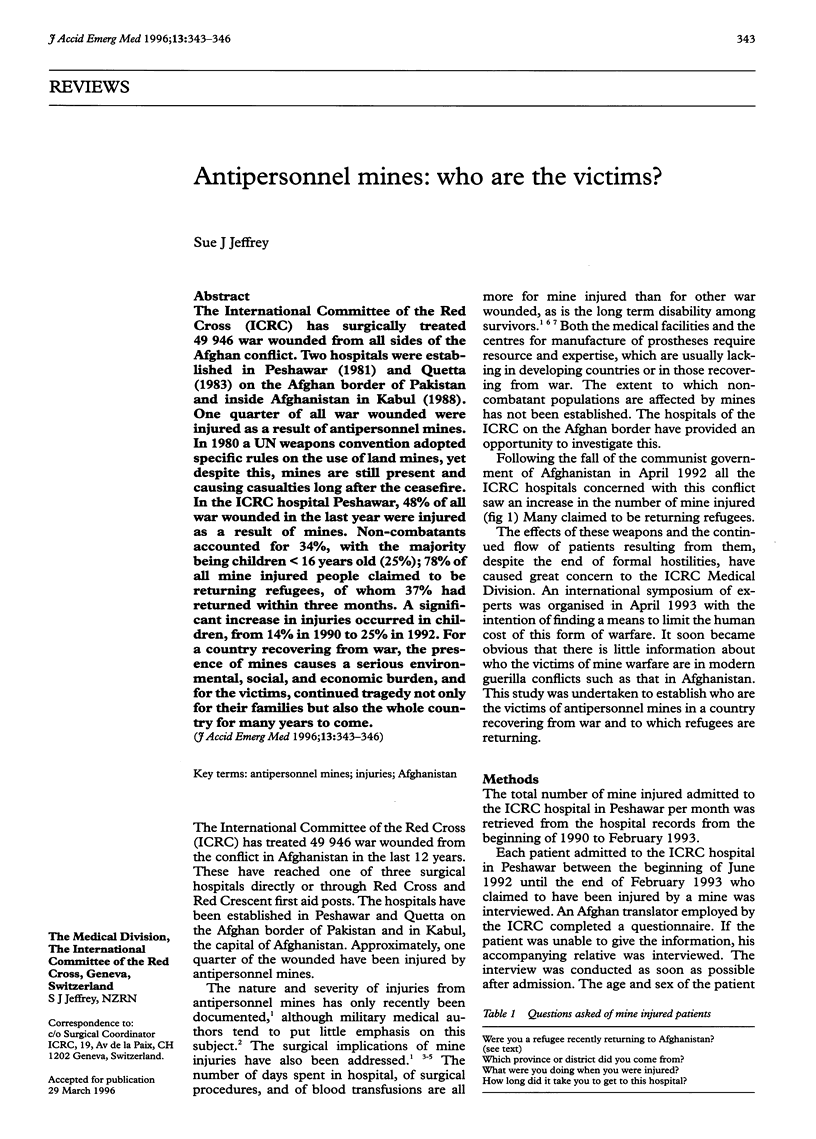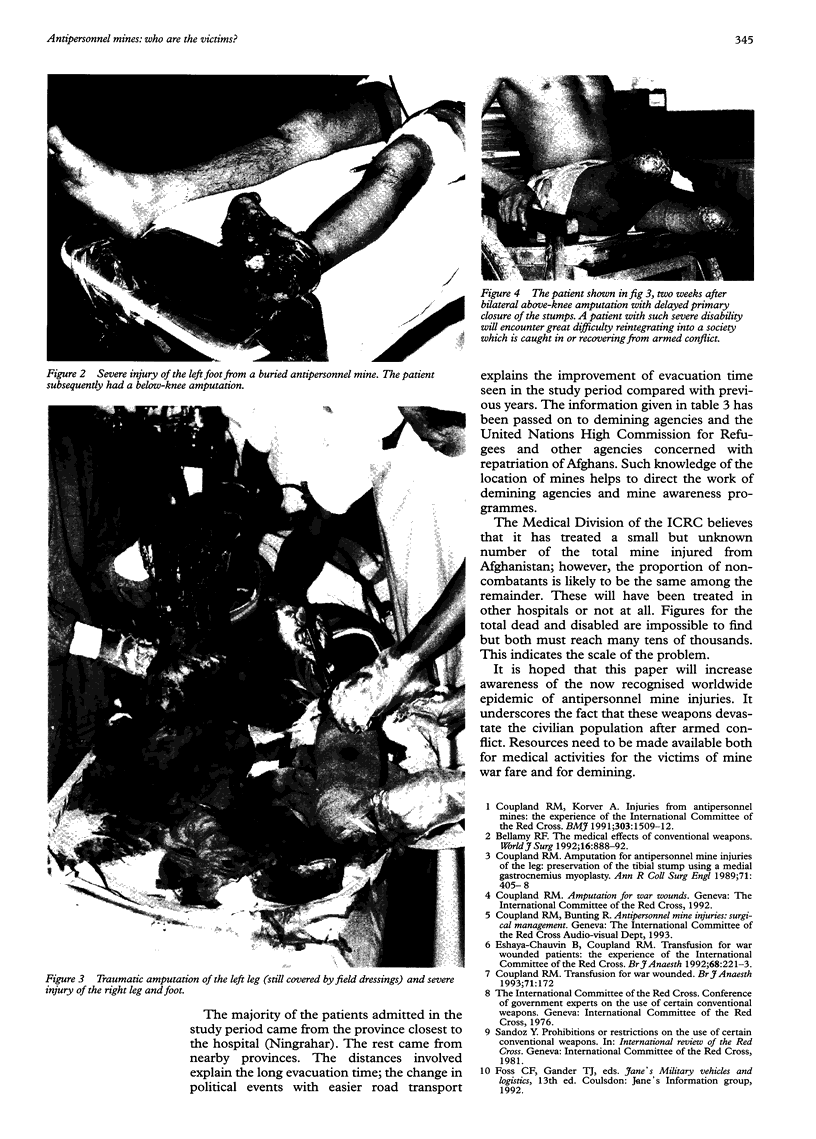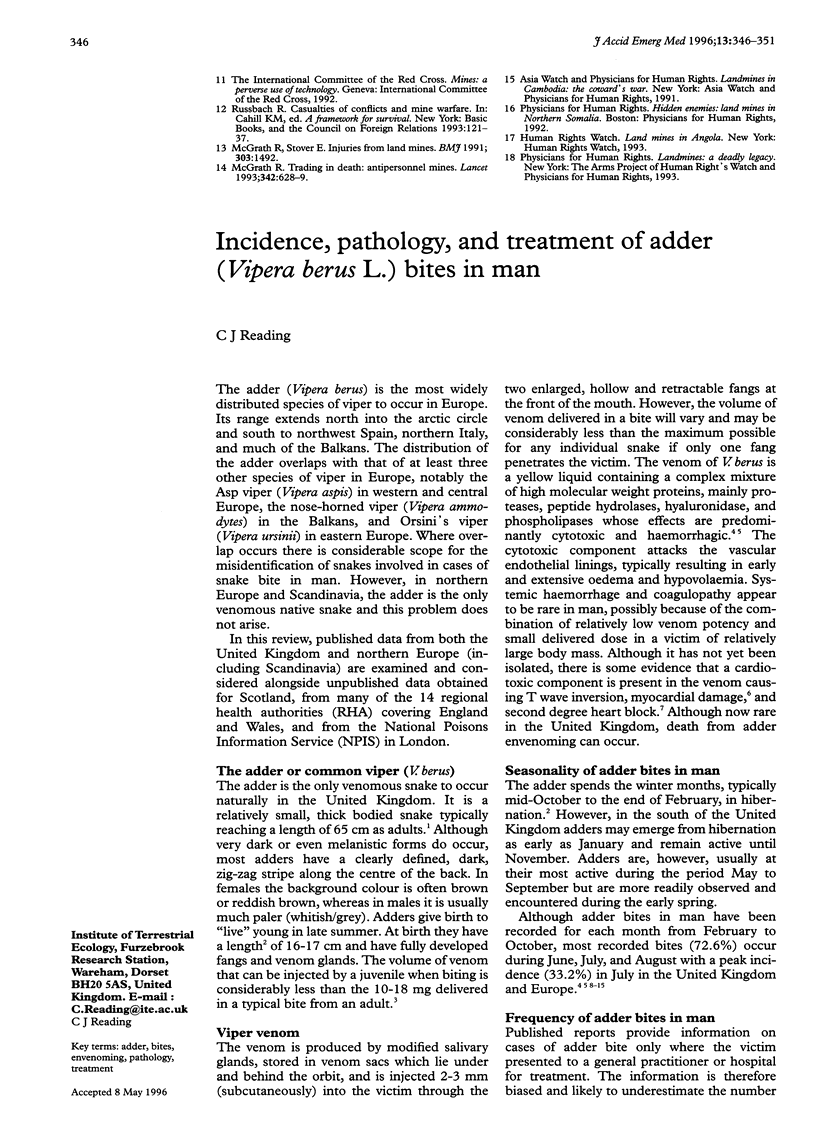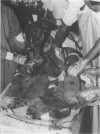Abstract
The International Committee of the Red Cross (ICRC) has surgically treated 49 946 war wounded from all sides of the Afghan conflict. Two hospitals were established in Peshawar (1981) and Quetta (1983) on the Afghan border of Pakistan and inside Afghanistan in Kabul (1988). One quarter of all war wounded were injured as a result of antipersonnel mines. In 1980 a UN weapons convention adopted specific rules on the use of land mines, yet despite this, mines are still present and causing casualties long after the ceasefire. In the ICRC hospital Peshawar, 48% of all war wounded in the last year were injured as a result of mines. Non-combatants accounted for 34%, with the majority being children < 16 years old (25%); 78% of all mine injured people claimed to be returning refugees, of whom 37% had returned within three months. A significant increase in injuries occurred in children, from 14% in 1990 to 25% in 1992. For a country recovering from war, the presence of mines causes a serious environmental, social, and economic burden, and for the victims, continued tragedy not only for their families but also the whole country for many years to come.
Full text
PDF



Images in this article
Selected References
These references are in PubMed. This may not be the complete list of references from this article.
- Bellamy R. F. The medical effects of conventional weapons. World J Surg. 1992 Sep-Oct;16(5):888–892. doi: 10.1007/BF02066987. [DOI] [PubMed] [Google Scholar]
- Coupland R. M. Amputation for antipersonnel mine injuries of the leg: preservation of the tibial stump using a medial gastrocnemius myoplasty. Ann R Coll Surg Engl. 1989 Nov;71(6):405–408. [PMC free article] [PubMed] [Google Scholar]
- Eshaya-Chauvin B., Coupland R. M. Transfusion requirements for the management of war injured: the experience of the International Committee of the Red Cross. Br J Anaesth. 1992 Feb;68(2):221–223. doi: 10.1093/bja/68.2.221. [DOI] [PubMed] [Google Scholar]
- McGrath R., Stover E. Injuries from land mines. BMJ. 1991 Dec 14;303(6816):1492–1492. doi: 10.1136/bmj.303.6816.1492. [DOI] [PMC free article] [PubMed] [Google Scholar]
- McGrath R. Trading in death: anti-personnel mines. Lancet. 1993 Sep 11;342(8872):628–629. doi: 10.1016/0140-6736(93)91751-7. [DOI] [PubMed] [Google Scholar]





